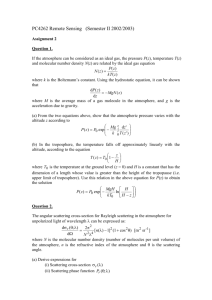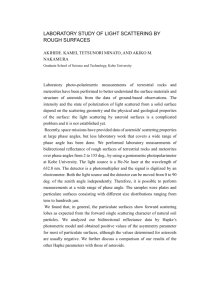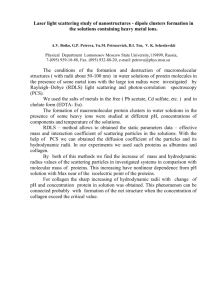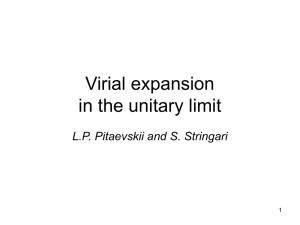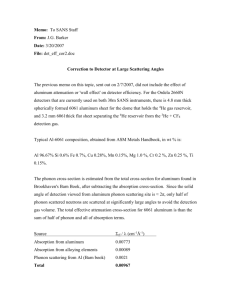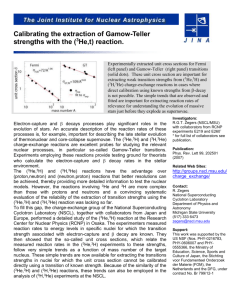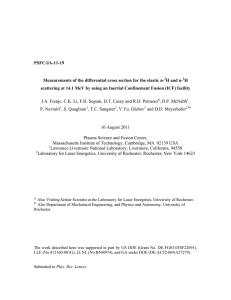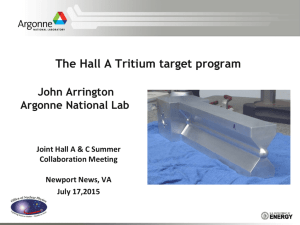Important Points: “3N and 4N Systems and the Ay Puzzle”
advertisement
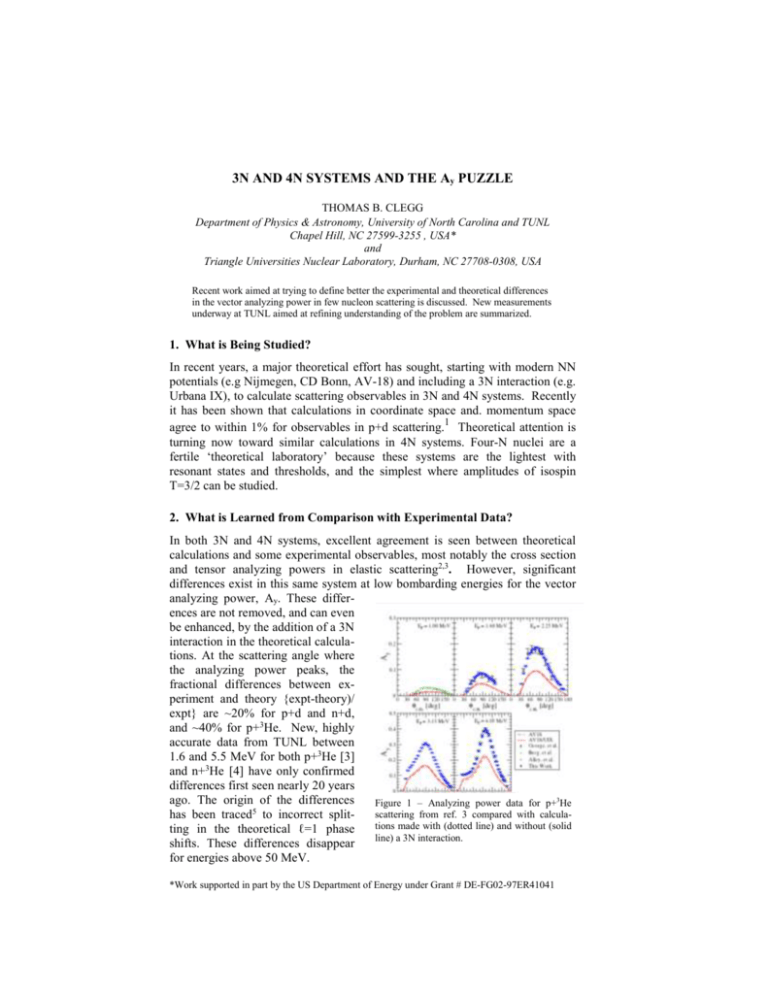
3N AND 4N SYSTEMS AND THE Ay PUZZLE
THOMAS B. CLEGG
Department of Physics & Astronomy, University of North Carolina and TUNL
Chapel Hill, NC 27599-3255 , USA*
and
Triangle Universities Nuclear Laboratory, Durham, NC 27708-0308, USA
Recent work aimed at trying to define better the experimental and theoretical differences
in the vector analyzing power in few nucleon scattering is discussed. New measurements
underway at TUNL aimed at refining understanding of the problem are summarized.
1. What is Being Studied?
In recent years, a major theoretical effort has sought, starting with modern NN
potentials (e.g Nijmegen, CD Bonn, AV-18) and including a 3N interaction (e.g.
Urbana IX), to calculate scattering observables in 3N and 4N systems. Recently
it has been shown that calculations in coordinate space and. momentum space
agree to within 1% for observables in p+d scattering.1 Theoretical attention is
turning now toward similar calculations in 4N systems. Four-N nuclei are a
fertile ‘theoretical laboratory’ because these systems are the lightest with
resonant states and thresholds, and the simplest where amplitudes of isospin
T=3/2 can be studied.
2. What is Learned from Comparison with Experimental Data?
In both 3N and 4N systems, excellent agreement is seen between theoretical
calculations and some experimental observables, most notably the cross section
and tensor analyzing powers in elastic scattering2,3. However, significant
differences exist in this same system at low bombarding energies for the vector
analyzing power, Ay. These differences are not removed, and can even
be enhanced, by the addition of a 3N
interaction in the theoretical calculations. At the scattering angle where
the analyzing power peaks, the
fractional differences between experiment and theory {expt-theory)/
expt} are ~20% for p+d and n+d,
and ~40% for p+3He. New, highly
accurate data from TUNL between
1.6 and 5.5 MeV for both p+3He [3]
and n+3He [4] have only confirmed
differences first seen nearly 20 years
ago. The origin of the differences
Figure 1 – Analyzing power data for p+3He
5
scattering from ref. 3 compared with calculahas been traced to incorrect splittions made with (dotted line) and without (solid
ting in the theoretical ℓ=1 phase
line) a 3N interaction.
shifts. These differences disappear
for energies above 50 MeV.
*Work supported in part by the US Department of Energy under Grant # DE-FG02-97ER41041
Further explanation for this ‘Ay puzzle’ is not yet understood. One possibility is
that the input NN potentials used in all the theoretical calculations may be
poorly defined at these low scattering energies. This would not be surprising
since so few Ay data exist there. Such low-energy NN measurements are
experimentally difficult. For example, the peak magnitude of Ay for p+p scattering is only 0.006 at 5 MeV [6]. Another possibility is that the correct 3N
interaction may not yet have been found. Or is something being left out in the
calculations? No agreement exists about the origin of the problem.
3. New Experimental Measurements Underway at TUNL
3.1. n+p Scattering
Recent very careful Ay measurements at 12 MeV by G. Weisel et
al.7 show significant differences
from values predicted by the
Nijmegen potential, causing some
concern about the validity of that
accepted potential model standard at
these low energies.
3.2. n+d Scattering
Other recent measurements by G.
Weisel et al.7 of Ay at En = 19 and
22.5 MeV to map out the energy
dependence of the disappearance of
the Ay puzzle.
Figure 2. - Preliminary TUNL measurements6 of
Ay for n+p scattering at 12 MeV. The dotted curve
is a polynomial fit to the data, while the solid curve
shows the prediction using the Nijmegen potential.
3.3. n+3He Scattering
New Ay measurements underway by J. Esterline et al.4 between En = 1.6 and 5.5
MeV will be compared with theoretical calculations mentioned above and with
similar data3 recently measured for p+3He scattering.
3.4.. p+3He Scattering
Daniels et al.8 are utilizing a polarized 3He target for measuring the target
analyzing power A0y and the spin correlation coefficients Axx and Ayy in p+3He
scattering at energies between 2 and 5.5 MeV. These data will be used in a new
energy-dependent phase shift analysis similar to that of George et al.9 to try to
determine p+3He phase shifts uniquely in this low energy range.
References
1)
2)
3)
4)
5)
6)
7)
8)
9)
A. Deltuva, et al., Phys. Rev. C71, 064003 (2005).
C. R. Brune et al., Phys Rev C63, 44013 (2001).
B. M. Fisher et al., Phys. Rev. C74, 034001 (2006).
J. Esterline and W. Tornow, private communication.
M. H. Wood, et al., Phys. Rev. C65, 034002 (2002).
M. D. Barker et al., Phys. Rev. Lett. 48, 918 (1982).
G. J. Weisel and W. Tornow, private communication.
T. V. Daniels and T. B. Clegg, private communication.
E. A. George and L. D. Knutson, Phys Rev. C67, 027001 (2003).




